Albanian Night! What a night!
Albanian Night! What a night!
If you are in Tirana and want to taste Albania in one place, our suggestion is “Albanian Night.” As soon as you enter this place in the heart of Tirana, you feel the atmosphere of an Albanian wedding inside a typical traditional Albanian home. This will be your unique experience since you may not have the opportunity to attend a real Albanian wedding.
Albanians are exceptional in their customs and traditions. They have numerous rituals to follow during weddings, which last almost a month and involve the entire community, including known and unknown people. The same is true for deaths. The variety of costumes, dances, and songs is rich and amazing. It differs from one city to another, from north to south, from one village to another.
This experience at Albanian Night will take you far back in time, to some old celebrations and rituals. Many traditions no longer continue today, and weddings have become modernized. At the same time, deaths gather mainly family members near the deceased, and funeral songs are disappearing.
And yet, why not try to immerse yourself in time and listen to some Albanian living traditions?
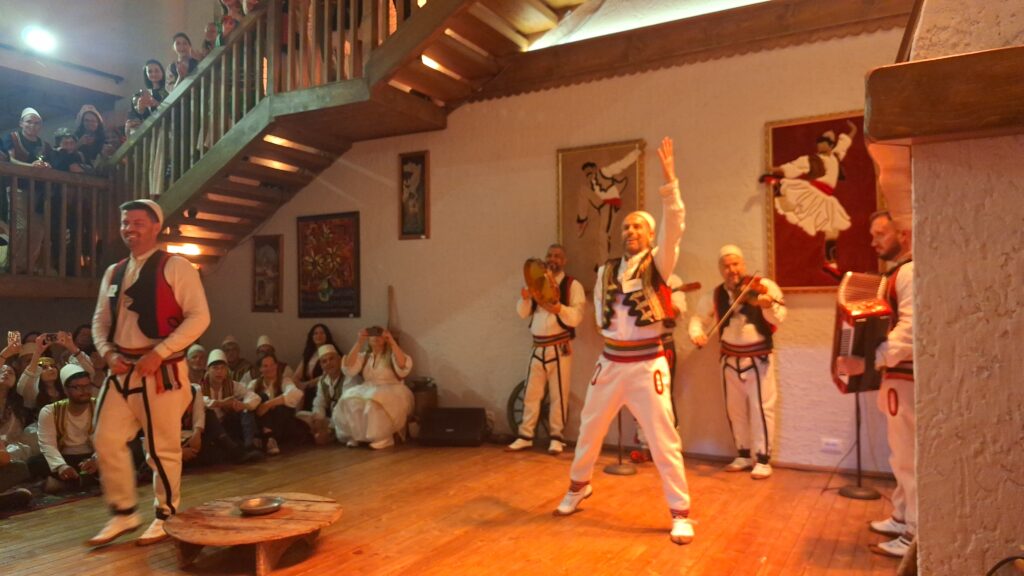
The story
A father happily invites all the guests to the door. His only son is getting married. The guests greet the groom’s parents, the groom himself, and the bride. Then, the women and men guests are separated into rooms and dressed in folk costumes representing different regions. Dressed in costumes, they join all the other guests in the main room, where the music starts and never stops.
The wedding opening rituals include festive dances to welcome the bride. Then the bride enters, and they dance all together. The Tirana dance and the dancers’ characteristic costumes dominate in variety and are more joyful and humorous.
Then all the tourists are invited to a circle dance, and everyone enjoys it.
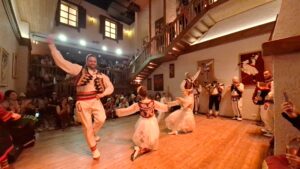
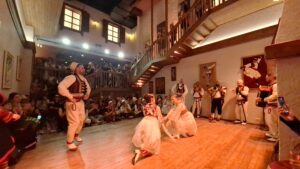
Isopolifonia
But in the middle of the wedding, everything changes suddenly. The groom is killed, and the parents’ whipping songs begin. Masterfully sung by the group’s vocalist, the music is a polyphony, a unique value of the Albanian intangible heritage already listed by UNESCO. It looks, for a moment, like a dramatic scene, but listen to the voice and the song, and consider why this type of music without an instrument became a UNESCO Heritage.
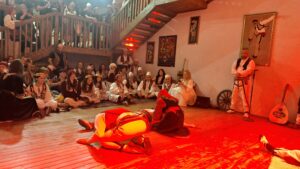
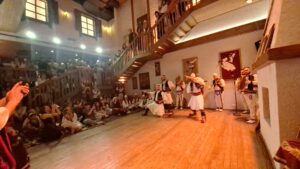
Another unique and very famous dance is the Osman Taka Dance. The story tells the story of a young man who the Ottomans imprisoned. Before hanging himself, he asked for his last wish to dance. He danced so beautifully and passionately that he was forgiven and released.
Other dances, such as Tumankuqe or Pogonishte, invited all the guests to dance in a circle.
Then, another UNESCO heritage is presented to you: Kcimi i Tropojes, a powerful and happy northern dance. It was inscribed on the Intangible Heritage List a year ago.
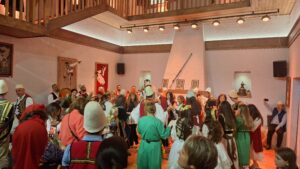
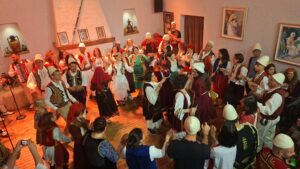
At the end, the atmosphere is more festive than ever with the song “O feste te madhe ka sot Shqipëria” (What a Festive Day Albania has today).
We are sure this experience will leave profound traces on all tourists about the history of dances, traditions, diverse costumes, and the strength of Albanians’ character.
Albanian Night will be an unforgettable night for those of you who want to take a piece of Albania with you, not only through this interactive experience but also by buying a souvenir at the Grand Bazaar on the first floor, where you will find about 10,000 different objects handmade by Albanian artisans. Enjoy Albania! 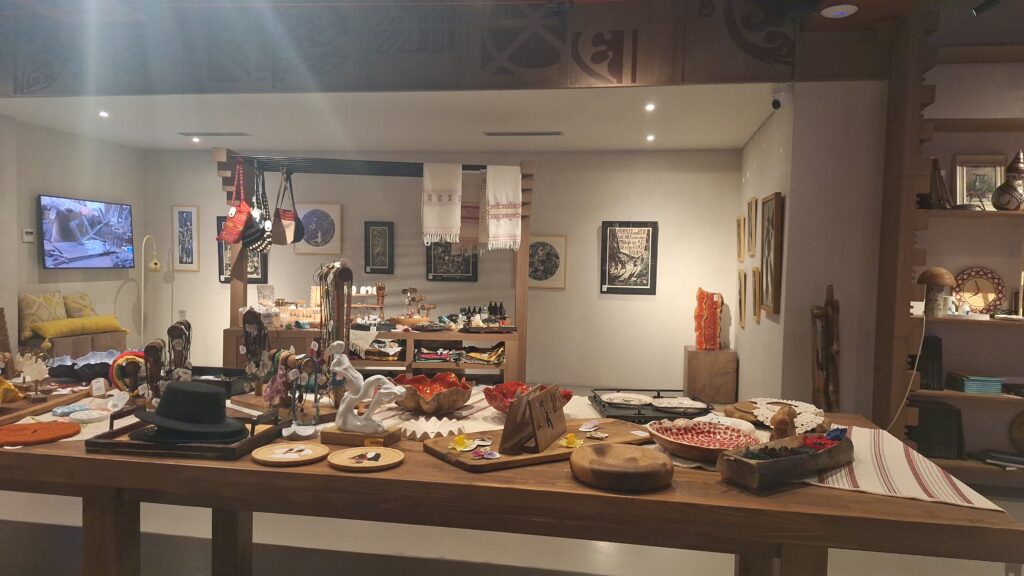
Book here: Albanian Night – Learn all about Albanian culture – Get tickets
Other News to Read
Albanian Night! What a night!
If you are in Tirana and want to taste Albania in one place, our suggestion is “Albanian Night.”
Vila 31- a trip to the past
Vila 31- a trip to the past, As a history lover, I approached the visit to this villa…
What to do in April 2025 in Tirana
April begins with numerous activities in Tirana. Some festivals feature music, art, and culture. April is also a…
The legend of April Witches in Albania
Raining and bad weather in the last week of March and the beginning of April is related to…